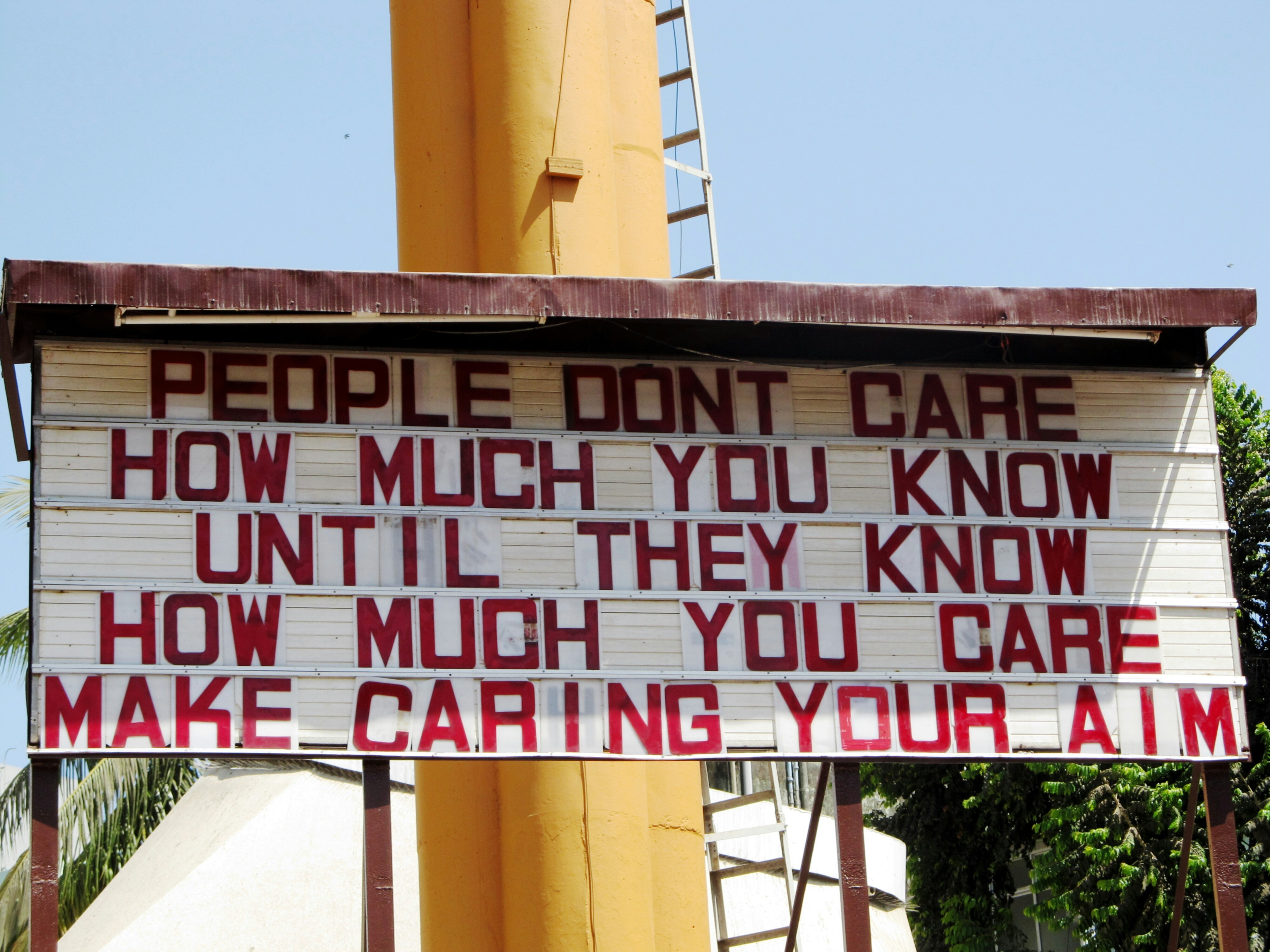How business leaders can build effective feedback systems

It's also vital that employees are prepared to receive feedback. Image: Unsplash/Annie Spratt
Katherine Klein
Vice-Dean, Wharton Social Impact Initiative, Wharton School, University of Pennsylvania- Research has found that direct feedback is not as effective as previously thought, with performance actually getting worse in one-third of occasions.
- Wharton management professor Katherine Klein explains why “pulling” - utilizing coaching and development strategies - is better than “pushing”.
- Five steps to 'pull' performance include using multiple approaches to teach employees and creating an organizational climate.
The goal:
Create feedback systems that improve, rather than diminish, performance.
Nano tool:
It’s a commonly held belief, one that gets played out daily in organizations around the world: Employees who receive performance feedback are much more likely to improve their performance than those who don’t get feedback. But research tells us that it’s simply not true. Typically, performance after feedback improves only modestly — and over one-third of the time, it actually gets worse. People who receive positive feedback often see no need for change, and those who receive negative feedback often react with skepticism, discouragement, and anger, dismissing the evaluation as inaccurate, unhelpful, or unfair.
But if feedback doesn’t always and easily improve performance, what should managers do? Research suggests that “pulling” is a better idea than “pushing.” Pulling entails teaching, coaching, and developing employees rather than pushing — or correcting — them. Pulling says, “Here’s how to get ahead in this company; we’ll provide you with guidelines and coaching to help you master these skills and behaviors.” Pushing says “You’re not doing very well.” In employees’ eyes, it’s likely to be the difference between challenge or inspiration and criticism.
To get favorable results from performance evaluations, evaluators must set positive expectations, showing that they believe improvements can be made, and that the feedback itself — even negative feedback — is an opportunity to learn rather than a punitive final word. They should also be willing to assist with concrete steps toward the suggested improvements, including coaching and goal setting. Done correctly, performance feedback can lead to improvements — but don’t forget to “pull” for those improvements by making clear the skills and behaviors needed and helping them to acquire them.
How companies use it:
Deloitte’s performance appraisal system, described as a tool for developing talent rather than benchmarking, incorporates factors such as coaching, training, self-assessment, multi-point feedback, behaviorally-based appraisal, and goal setting. Each practitioner has a counselor who is responsible for evaluation and coaching. Two expectations are outlined: performance at a client site and organization citizenship behaviors (OCB), which involve internal initiatives to increase firm value. Counselors are trained to record performance “in the moment” to aid in providing meaningful examples.
The U.S. Army’s Officer Corps experiences “pulling” at every level, as well as a feedback system that is direct, reinforcing, and indicative of clear ways for improvement. An “officer professional development” system and a formal mentoring program help to develop necessary leadership skills, whether technical or tactical. In addition, annual feedback and ratings are supplemented with After Action Reviews (AARs) that critique every mission, indicate needed improvements, and fix any problems before the next mission to mitigate risk.
Cargill, a 150-year-old Minneapolis-based food producer and distributor, uses ongoing conversations between managers and employees, giving forward-looking encouragement and motivation rather than retrospective evaluations. After shifting from annual reviews to this “Everyday Performance Management” system, almost 70% of the company’s employees said they felt valued and found the feedback useful.

Action steps:
To “pull” for great performance:
1. Clarify and specify the behaviors, skills, and accomplishments that employees at each level need to exhibit to do their jobs well and to progress to the next level. What are these factors and why are they important?
2. Use multiple approaches to teach employees what these factors are and how they link to the company’s strategy, values, and performance. Publicize them in training sessions, emails, or websites. Ask higher-level employees to meet with lower-level colleagues for a Q&A session on getting ahead. Offer mentoring, coaching, formal classes, and/or opportunities to shadow employees working in different units, roles, or higher-level positions.
3. Create an organizational climate that’s safe for asking questions, getting feedback, and learning new things. Let employees know that whenever they have questions they can and should reach out to their supervisors and others in higher-level positions.
4. Coach supervisors in how to give performance feedback to their direct reports that includes:
- delivering an honest message in a way that employees are likely to find both fair and constructive
- inviting employees to ask questions, provide input, and reflect on their own performance
- keeping the focus on the task and behavior, not the self and personal traits
- providing coaching to support employees in acquiring new and more effective skills, behaviors, and accomplishments
- setting goals for performance improvement
- emphasizing the learning opportunity and the fact that change is possible.
5. Be prepared when receiving feedback to ask the kinds of questions that will check defensiveness and enhance learning, such as: What do you think I’m already doing well? What are areas for improvement? Are there specific things I have done that I should definitely keep doing? What specific things have I done that have concerned you and why? Then paraphrase what you have heard (“So key areas for me to work on are….”), ask what resources exist for you to make improvements in these areas, and set a date to meet again to discuss your progress.
Don't miss any update on this topic
Create a free account and access your personalized content collection with our latest publications and analyses.
License and Republishing
World Economic Forum articles may be republished in accordance with the Creative Commons Attribution-NonCommercial-NoDerivatives 4.0 International Public License, and in accordance with our Terms of Use.
The views expressed in this article are those of the author alone and not the World Economic Forum.
Stay up to date:
Future of Work
Related topics:
Forum Stories newsletter
Bringing you weekly curated insights and analysis on the global issues that matter.
More on Stakeholder CapitalismSee all
Pedro Leitao
November 5, 2025






